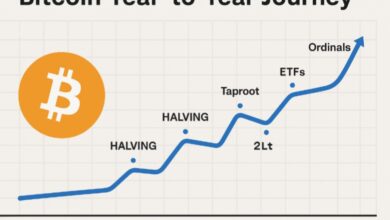United Airlines’ Summer Earnings and Bullish Profit Outlook: What’s Driving the Upside?

Introduction: A Strong Summer, Stronger Outlook
Airlines live and die by demand, cost control, and operational reliability. For United Airlines, the summer season delivered more than just passenger traffic — it brought a beat on profit estimates and a confident outlook for the quarters ahead.
In its latest earnings report, United not only exceeded expectations for the third quarter but also raised guidance for Q4, pointing to robust demand, loyalty momentum, and strategic investments in the passenger experience. This wasn’t just a momentary spike; it looks like United is doubling down on repositioning itself for sustained performance.
Let’s dig into what’s behind the numbers, what risks remain, and what this means going forward — both for United and airline industry watchers.
Key Takeaways from the Results
Q3 Earnings: Beats on Profit, Slight Miss on Revenue
Adjusted EPS came in at $2.78 per share, beating consensus estimates. Investing.com+2PR Newswire+2
Revenue grew 2.6% year-over-year to $15.2 billion, though that was slightly below what analysts had forecast. PR Newswire+3Investing.com+3ir.united.com+3
Pre-tax earnings were about $1.3 billion, representing a solid pre-tax margin (~8.2%) for the quarter. PR Newswire+1
On the balance sheet, United ended the quarter with $16.3 billion in available liquidity and total debt & financial liabilities of $25.4 billion. PR Newswire+2ir.united.com+2
Operationally, United reported its largest summer mainline schedule ever and its lowest Q3 cancellation rate in company history, underscoring reliability. PR Newswire
In short: the profit line surprised on the upside, helped by tight cost control and well-executed operations, even while revenue growth faced challenges.
What’s Fueling the Strong Outlook
United didn’t just rest on its laurels. The company backed its results with a bold forecast and strategic vision:
1. Upgraded Q4 Guidance
United forecasts adjusted EPS between $3.00 and $3.50 for Q4 — well above many street estimates. Investing.com+2PR Newswire+2
Management expects Q4 to be its highest-ever revenue quarter, driven by stronger pricing, better demand, and sustained loyalty. The Wall Street Journal+2Reuters+2
2. Loyalty & Premium Travel Strength
Premium cabin revenue increased ~6% year-over-year in Q3, while loyalty revenue (frequent flyers, ancillary income) rose ~9%. Investing.com+1
These segments carry higher margins and less price sensitivity compared to basic economy — giving United a buffer when the broader market softens. PR Newswire+1
3. Customer Experience Investments
United plans to invest over $1 billion in 2026 for customer-facing upgrades: seatback screens, improved cabin amenities, and Starlink inflight connectivity. PR Newswire+1
These enhancements aim to build brand loyalty and justify premium pricing, making customers more likely to stay with United over lower-cost alternatives.
4. Cost Discipline & Efficiency Gains
While capacity (i.e., available seat miles) rose ~7.2% year-over-year, United managed to keep unit costs in check. Some costs were shifted between quarters (e.g., maintenance timing) to optimize tax or accounting impact. PR Newswire+1
Also, United prepaid its remaining MileagePlus bond obligations during the quarter — freeing itself from financed debt tied to ancillary operations. PR Newswire
These moves reveal that United is not only betting on demand — it’s also sharpening its internal engine.
Risks & Challenges That Could Temper the Upside
Even with a strong showing, several headwinds remain:
1. Revenue Per Unit Pressure
One oft-cited metric is TRASM (Total Revenue per Available Seat Mile). In Q3, TRASM was down ~4.3% year-over-year — meaning revenue growth didn’t fully keep pace with added capacity. Investing.com+2TradingView+2
If that trend continues into Q4, the margin cushion could erode.
2. Fuel & Input Cost Volatility
Airlines remain sensitive to jet fuel prices, labor costs, and supply chain pressures. A spike in fuel or unexpected cost inflation could bite into profitability quickly.
3. Macro & Demand Uncertainty
Slowing consumer sentiment, recession fears, and geopolitical shocks can easily dampen travel demand. United has had to reduce capacity in the past summer period as a preemptive move during weaker conditions. Business Insider+3New York Post+3Reuters+3
Also, constraints at hub airports (e.g. Newark) can throttle upside even if demand exists. Reuters
4. Execution Risk
Scaling operations, deploying new tech (Starlink connectivity, cabin retrofits), and managing maintenance and reliability at scale all carry execution risk. Any hiccups — flight delays, tech failures, regulatory delays — could put pressure on United’s brand and margins.
What This Means for Investors & the Airline Sector
For United (UAL) Stockholders
These numbers justify optimism. The company is executing well on its premium & loyalty emphasis, showing operational discipline, and backing it with a confident outlook. If Q4 hits or beats guidance, it could re-rate higher multiples.
That said, investors should watch TRASM trends, cost inflation, and macro signals closely — because airlines often swing hard in both directions.
For Sector Peers
United’s focus offers a blueprint: differentiation via loyalty, premium services, and experience enhancements. Airlines overly dependent on deep-discount or low-cost models may find themselves squeezed as margin competition intensifies.
In broader market terms, strong airline earnings often link to general economic strength (business travel, consumer mobility). United’s results could be an indicator of broader travel & services resilience.
Conclusion: A Summer Win That Sets the Tone
United Airlines’ summer earnings report was more than a seasonal bounce — it was a statement. By outperforming profit expectations, backing it with bold forward guidance, and investing in loyalty and operations, United is signaling it aims to be more than a cyclical airline: it’s aiming to be a differentiated travel brand.
The road ahead isn’t without obstacles — cost shocks, demand dips, and competitive pressures loom — but United’s current positioning gives it a fighting chance.
Suggestions & Strategic Moves to Watch
Watch margin-sensitive metrics closely
Monitor TRASM, CASM (cost per available seat mile), and how fleet utilization changes in Q4.Evaluate customer investments critically
If Starlink connectivity, retrofits, and in-cabin enhancements convert into loyalty and higher fare yields, they’ll validate United’s strategy — otherwise they risk being cost centers.Balance optimism with caution
Lean into United’s upside potential but diversify exposure — airline stocks tend to be volatile.Monitor macro & policy signals
Fuel prices, regulation, airport constraints, and global travel trends will all influence how much room United has to execute.Use earnings season as a barometer
Compare United to peers (Delta, American, etc.) to see which strategies outperform or underperform in the same environment.











